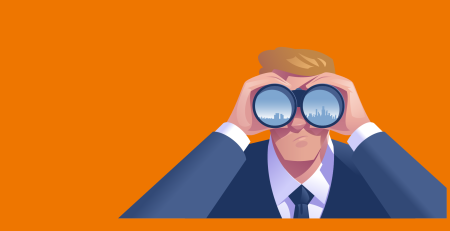Software Outsourcing: Top 10 Questions From Our Clients
Table of Contents
Introduction
In an era dominated by technological evolution, businesses are constantly seeking innovative solutions to stay ahead. Software outsourcing has emerged as a strategic avenue for companies to access specialized skills, reduce costs, and expedite project timelines. At Nile Bits Software Outsourcing Company, we understand the importance of addressing our clients’ concerns with transparency and expertise. In this comprehensive blog post, we delve into the top 10 questions frequently posed by our clients about software outsourcing.
As a leading player in the software outsourcing landscape, we recognize the significance of demystifying the intricacies of the outsourcing process. Whether you’re contemplating outsourcing for the first time or seeking to optimize your existing outsourcing strategies, this blog post aims to provide insightful answers to the most common queries.
So, buckle up as we embark on a journey to decode the world of software outsourcing, unraveling the complexities, and offering clarity on the key aspects that matter most to our clients. From data security to project management methodologies, we’ve got you covered. Let’s navigate the landscape of software outsourcing together and empower your business for success.
1. Why Should We Consider Software Outsourcing?
Considering software outsourcing with Nile Bits offers a myriad of advantages that set us apart as a leading player in the industry. Here are compelling reasons why your business should choose Nile Bits as its outsourcing partner:
Proven Expertise:
- Nile Bits boasts a track record of successfully delivering high-quality software solutions across diverse industries. Our team of skilled professionals possesses a wealth of experience, ensuring that your projects are in capable hands.
Diverse Service Portfolio:
- We offer a comprehensive suite of services, including custom software development, quality assurance, and ongoing support. This diverse portfolio allows us to cater to the unique needs of your business throughout the entire software development life cycle.
Client-Centric Approach:
- At Nile Bits, our clients are at the center of everything we do. We prioritize understanding your business objectives, challenges, and requirements to tailor our solutions accordingly. Your success is our success.
Transparent Communication:
- Effective communication is fundamental to successful outsourcing partnerships. Nile Bits prioritizes transparent and open communication, ensuring that you are informed at every stage of the development process. Our communication channels are designed to foster collaboration and understanding.
Security and Confidentiality:
- We understand the importance of safeguarding your sensitive information. Nile Bits implements robust security measures to ensure the confidentiality and integrity of your data throughout the software development life cycle.
Quality Assurance Excellence:
- Quality is non-negotiable at Nile Bits. Our rigorous quality assurance processes are designed to identify and address potential issues early in the development cycle, ensuring that the final deliverables meet the highest standards.
Flexible Engagement Models:
- Recognizing that each project is unique, we offer flexible engagement models tailored to your specific needs. Whether you prefer a fixed-price model, time and material model, or a dedicated team, Nile Bits adapts to suit your project requirements.
Cost-Effective Solutions:
- Nile Bits delivers cost-effective solutions without compromising on quality. Our strategic location allows us to offer competitive pricing while ensuring that your projects benefit from the expertise of our skilled professionals.
Adherence to Best Practices:
- We adhere to industry best practices and follow established methodologies throughout the software development life cycle. This commitment to best practices ensures the reliability, scalability, and maintainability of the software solutions we deliver.
Long-Term Partnership Focus:
- Nile Bits is committed to building long-term partnerships with our clients. Beyond project delivery, we offer ongoing support and maintenance, ensuring that your software solutions remain up-to-date, secure, and aligned with your evolving business needs.
In considering software outsourcing with Nile Bits, you’re not just selecting a service provider; you’re choosing a trusted partner dedicated to your success. Join the ranks of businesses that have benefited from our expertise, commitment, and customer-centric approach to software outsourcing.
2. How Do You Ensure Data Security in Software Outsourcing?
Ensuring data security is a top priority at Nile Bits, and we implement a robust set of measures to safeguard the confidentiality, integrity, and availability of our clients’ data throughout the software outsourcing process. Here’s an overview of our data security practices:
Strict Access Controls:
- Nile Bits enforces strict access controls to ensure that only authorized personnel have access to sensitive data. Access permissions are role-based, limiting access to information based on job responsibilities.
Secure Infrastructure:
- Our infrastructure is designed with security in mind. We employ the latest security technologies and practices to protect our servers, networks, and databases. Regular security audits and updates are conducted to address potential vulnerabilities.
Data Encryption:
- All data transmitted between clients and Nile Bits, as well as within our internal systems, is encrypted using industry-standard encryption protocols. This encryption ensures that even if intercepted, the data remains unintelligible and secure.
Secure Development Practices:
- Nile Bits follows secure coding practices during the software development life cycle. Our developers are trained to identify and address potential security vulnerabilities, reducing the risk of data breaches through the application layer.
Regular Security Audits and Testing:
- We conduct regular security audits and testing to identify and address vulnerabilities in our systems and applications. This includes penetration testing, code reviews, and vulnerability assessments to maintain a proactive security posture.
Employee Training and Awareness:
- Our team undergoes regular training on data security best practices and is well-versed in the importance of protecting sensitive information. This includes awareness of social engineering threats and phishing attempts.
Data Backups and Recovery:
- Nile Bits implements robust data backup and recovery procedures to ensure the availability of data in the event of unforeseen incidents. Regularly scheduled backups are stored securely, and recovery processes are tested to guarantee data integrity.
Contractual Agreements and NDAs:
- Prior to commencing any project, Nile Bits establishes clear contractual agreements with clients, including non-disclosure agreements (NDAs). These legal documents formalize our commitment to maintaining the confidentiality of client information.
Compliance with Industry Standards:
- Nile Bits adheres to industry-specific security standards and compliance requirements. This includes compliance with regulations such as GDPR, HIPAA, or any other standards relevant to the specific industry in which our clients operate.
Continuous Monitoring and Incident Response:
- We employ continuous monitoring tools to detect and respond to security incidents in real-time. In the event of a security incident, Nile Bits has a well-defined incident response plan in place to mitigate the impact and prevent further vulnerabilities.
By integrating these comprehensive data security measures into our software outsourcing practices, Nile Bits ensures that our clients can confidently entrust us with their sensitive information. Our commitment to data security extends across every phase of the software development life cycle, providing clients with peace of mind and a solid foundation for a secure and successful outsourcing partnership.
3. What Services Does a Software Outsourcing Company Provide?
Nile Bits, like many reputable software outsourcing companies, provides a comprehensive range of services to meet the diverse needs of clients in the ever-evolving technology landscape. Here’s an overview of the services you can expect from a software outsourcing company, with Nile Bits as an example:
Dedicated Development Team:
- Nile Bits offers the option of forming a Dedicated Development Team for clients seeking a committed and specialized group of professionals to exclusively work on their projects. Key features of this service include:
- Full control and management of the dedicated team.
- Flexibility to scale the team size based on project requirements.
- Direct communication with team members for seamless collaboration.
- Tailored expertise to match the unique needs of the project.
Software Outsourcing:
- Nile Bits facilitates Software Outsourcing, allowing clients to delegate specific tasks or entire projects to their experienced team. This service includes:
- Leveraging Nile Bits’ expertise for specific stages of the software development life cycle.
- Access to a pool of skilled professionals without the need for in-house hiring.
- Streamlined project management, ensuring timely and efficient delivery.
- Cost-effective solutions without compromising on quality.
Staff Augmentation:
- Nile Bits provides Staff Augmentation services to clients looking to enhance their in-house teams with additional resources. This service involves:
- Rapid access to skilled professionals without the challenges of long-term hiring.
- Flexible augmentation based on project requirements.
- Seamless integration of augmented staff with the existing team.
- Cost-effective solution for short-term or specific skill needs.
These services collectively reflect Nile Bits’ commitment to offering flexible and tailored solutions to clients. Whether clients need a dedicated team, want to outsource specific tasks, or require additional resources through staff augmentation, Nile Bits provides a range of options to suit various project needs.
4. What Is the Software Development Life Cycle (SDLC) and How Does It Work in Outsourcing?
SDLC is the framework that helps in designing a development environment for software applications. It is a template on which information system development can be planned, structured and controlled. These steps comprise phases that are characterized by specific activities, deliverables, and outputs within the SDLC. Here’s an overview of the common phases of the SDLC and how it works in the context of outsourcing:
Planning:
- In-House: The planning phase involves defining the scope, goals, and requirements of the project. It includes creating a project plan, defining roles and responsibilities, and estimating timelines and costs.
- Outsourcing: When outsourcing, the planning phase may involve collaboration between the client and the outsourcing partner. Both parties work together to define project goals, requirements, and timelines. The outsourcing partner may contribute to the project plan, providing insights based on their expertise.
Feasibility Study:
- In-House: This phase assesses the feasibility of the project, considering technical, operational, and financial aspects. It helps determine whether the project is viable and worth pursuing.
- Outsourcing: The feasibility study remains essential in outsourcing. The outsourcing partner contributes by providing insights into the technical feasibility, potential challenges, and cost estimates. This collaboration ensures that both parties have a clear understanding of the project’s viability.
Design:
- In-House: The design phase involves creating detailed technical specifications based on the project requirements. It includes architectural design, database design, and user interface design.
- Outsourcing: In outsourcing, the design phase may be a collaborative effort. The client and the outsourcing partner work together to create a design that aligns with the client’s vision and meets technical specifications. Effective communication is crucial during this phase.
Implementation (Coding):
- In-House: Developers write the code based on the design specifications. The coding phase is where the actual development of the software takes place.
- Outsourcing: Coding is performed by the outsourcing partner’s development team. The client may be involved in code reviews and iterations to ensure that the code meets the project requirements.
Testing:
- In-House: The in-house testing team verifies that the software functions correctly and meets the specified requirements. This phase includes unit testing, integration testing, and system testing.
- Outsourcing: Testing is a collaborative effort. The outsourcing partner conducts various testing activities, and the client may participate in user acceptance testing (UAT). Effective communication is essential to address any issues identified during testing.
Deployment:
- In-House: The software is deployed to the production environment, making it accessible to end-users.
- Outsourcing: Deployment is often a joint effort. The outsourcing partner may handle the technical aspects of deployment, while the client oversees the transition and user training.
Maintenance and Support:
- In-House: After deployment, ongoing maintenance and support are provided to address issues, implement updates, and ensure the software’s continued functionality.
- Outsourcing: Maintenance and support may be part of the outsourcing agreement. The outsourcing partner takes responsibility for addressing issues, releasing updates, and providing ongoing support as agreed upon in the service-level agreement (SLA).
Effective communication, collaboration, and a clear understanding of roles and responsibilities are crucial for successful SDLC implementation in outsourcing. Both parties work together to ensure that the project progresses smoothly through each phase, resulting in the delivery of a high-quality software solution.
5. How Secure Is the Software Development Process?
The security of the software development process is a critical consideration to safeguard against potential threats and vulnerabilities. Security measures are implemented throughout the Software Development Life Cycle (SDLC) to ensure that the final product is resilient against cyberattacks and data breaches. Here’s an overview of the security aspects integrated into the software development process:
Requirements Analysis and Design:
- Security Considerations: Security begins with understanding and documenting security requirements during the early stages of the SDLC. Threat modeling helps identify potential risks, and security architecture is designed to mitigate these risks.
- Implementation: Security features and controls are integrated into the software design. This includes secure coding practices, such as input validation, output encoding, and the use of secure libraries and frameworks.
Coding and Implementation:
- Security Considerations: Developers follow secure coding practices to prevent common vulnerabilities like injection attacks, cross-site scripting (XSS), and cross-site request forgery (CSRF). Code reviews and static analysis tools help identify and rectify security issues during development.
Testing:
- Security Considerations: The testing phase includes various security assessments, such as penetration testing and vulnerability scanning, to identify and address security weaknesses. Dynamic analysis tools and security testing frameworks are employed to simulate real-world attack scenarios.
Deployment:
- Security Considerations: Secure deployment practices involve configuring servers and environments securely, encrypting sensitive data during transit and at rest, and implementing access controls. Automated deployment pipelines are configured securely to prevent unauthorized access.
Monitoring and Incident Response:
- Security Considerations: Continuous monitoring of the software in the production environment helps detect abnormal activities and potential security incidents. An incident response plan is in place to address security breaches promptly and effectively.
User Authentication and Authorization:
- Security Considerations: Robust authentication mechanisms, such as multi-factor authentication, are implemented to verify user identities. Authorization controls ensure that users have appropriate access levels based on their roles and responsibilities.
Data Protection:
- Security Considerations: Encryption is applied to sensitive data, both in transit and at rest. Hashing and salting techniques are employed to secure passwords. Compliance with data protection regulations, such as GDPR or HIPAA, is ensured based on the application’s context.
Third-Party Components and Libraries:
- Security Considerations: The use of third-party components and libraries is carefully vetted for security vulnerabilities. Regular updates and patching are applied to address any security issues discovered in third-party dependencies.
Security Training and Awareness:
- Security Considerations: Developers and other team members undergo security training to stay informed about the latest security threats and best practices. Creating a security-conscious culture is essential for maintaining a vigilant team.
Documentation and Compliance:
- Security Considerations: Comprehensive documentation includes security policies, procedures, and guidelines. Compliance with industry-specific security standards and regulations is maintained throughout the SDLC.
A variety of stakeholders, including developers, security experts, and project managers, work together continuously to ensure the security of the software development process. Maintaining a strong security posture and adjusting to changing threats need regular security audits, evaluations, and upgrades. To guarantee that their software applications are resilient against cyber attacks, enterprises must give security top priority across the whole software development life cycle (SDLC).
6. How Does Communication Work in Software Outsourcing?
Effective communication is a cornerstone of successful software outsourcing. Given that teams may be located in different geographical locations and time zones, establishing clear and efficient communication channels is crucial for project success. Here’s how communication typically works in software outsourcing:
Project Kickoff and Onboarding:
- Initial Meetings: The communication process often begins with a series of kickoff meetings. This includes introductions, discussions about the project scope, goals, and expectations.
- Onboarding: Teams may go through an onboarding process, where they familiarize themselves with the project’s documentation, tools, and workflows.
Communication Channels:
- Project Management Tools: Teams use project management tools (e.g., Jira, Trello, Asana) for task tracking, progress monitoring, and issue resolution.
- Messaging Platforms: Communication is facilitated through messaging platforms (e.g., Slack, Microsoft Teams) for real-time conversations, updates, and quick queries.
- Video Conferencing: Regular video conferences are scheduled for more in-depth discussions, status updates, and collaborative sessions.
Regular Meetings:
- Sprint Planning: Agile methodologies often involve sprint planning meetings where tasks for the upcoming sprint are discussed, and priorities are set.
- Daily Stand-ups: Short daily stand-up meetings provide a platform for team members to share progress, discuss challenges, and plan for the day.
- Sprint Review and Retrospective: At the end of each sprint, a review and retrospective meeting is conducted to evaluate the completed work, discuss improvements, and plan for the next sprint.
Documentation and Knowledge Sharing:
- Documentation: Detailed project documentation is maintained and shared through collaborative platforms. This includes requirements, design specifications, coding guidelines, and testing plans.
- Knowledge Transfer: Knowledge sharing sessions and documentation help ensure that all team members, regardless of location, have access to the same information.
Language and Cultural Considerations:
- Common Language: Establishing a common language for communication is crucial. In many cases, English is adopted as the primary language for written and verbal communication.
- Cultural Sensitivity: Awareness of cultural differences and adapting communication styles accordingly helps foster understanding and collaboration.
Regular Updates and Reporting:
- Status Reports: Regular status reports or dashboards are shared with stakeholders, providing a snapshot of project progress, achievements, and potential challenges.
- Risk and Issue Tracking: A systematic approach to tracking risks and issues ensures that problems are identified early and addressed promptly.
Escalation Paths:
- Issue Resolution: Clearly defined escalation paths for resolving issues or conflicts help maintain project momentum. This involves identifying key contacts and procedures for escalating problems when needed.
Client Involvement:
- Regular Meetings with Clients: Scheduled meetings with clients, whether weekly or bi-weekly, allow for direct communication, requirement clarification, and feedback gathering.
- Client Portal or Dashboard: Some projects utilize client portals or dashboards where clients can access project-related information and updates at their convenience.
Flexible Communication Styles:
- Adapting to Time Zones: Teams often adapt their working hours to accommodate time zone differences, ensuring that critical discussions involve members from all locations.
- Flexible Modes: Combining asynchronous communication (email, documentation) with synchronous communication (meetings, calls) accommodates different work styles and time constraints.
Continuous Improvement:
- Feedback Loops: Regular feedback sessions, both formal and informal, contribute to continuous improvement in communication processes and overall project collaboration.
- Retrospectives: Periodic retrospectives help teams reflect on their communication practices, identify areas for improvement, and implement changes.
Effective communication in software outsourcing is not a one-size-fits-all approach; it requires flexibility, adaptability, and a commitment to open and transparent interactions. Clear channels, regular updates, and a proactive approach to addressing challenges contribute to the success of the outsourcing engagement.
7. What Measures Are in Place for Quality Assurance?
Quality assurance (QA) is a crucial aspect of the software development process, ensuring that the final product meets the specified requirements and functions reliably. Here are common measures that are typically in place for quality assurance in software development:
Requirements Analysis:
- Clear and Complete Requirements: QA starts with a thorough analysis of requirements to ensure they are clear, complete, and well-understood by all team members.
Test Planning:
- Comprehensive Test Planning: QA teams create detailed test plans that outline the testing strategy, scope, objectives, resources, schedule, and entry/exit criteria.
Test Cases and Scripts:
- Detailed Test Cases: Test cases are developed based on requirements, outlining step-by-step procedures to validate the functionality of the software.
- Automated Test Scripts: In cases where automation is feasible, automated test scripts are developed to enhance testing efficiency and coverage.
Test Environment Setup:
- Replication of Production Environment: The test environment is set up to closely replicate the production environment, ensuring that testing is conducted in conditions similar to the end-user environment.
Functional Testing:
- Unit Testing: Developers perform unit testing to validate individual components or modules of the software.
- Integration Testing: Testing the interactions between integrated components or systems to ensure they function as expected.
- System Testing: Testing the entire system as a whole to verify that all components work together seamlessly.
Non-Functional Testing:
- Performance Testing: Evaluating the system’s responsiveness, speed, scalability, and stability under various conditions.
- Security Testing: Identifying and addressing potential vulnerabilities and security threats.
- Usability Testing: Assessing the user-friendliness and overall user experience of the software.
Regression Testing:
- Ensuring Stability: After each code change or new feature implementation, regression testing is conducted to ensure that existing functionality remains stable.
User Acceptance Testing (UAT):
- Client Involvement: The client or end-users participate in UAT to validate that the software meets their requirements and expectations.
Defect Tracking and Management:
- Defect Identification: QA teams identify and document defects or issues discovered during testing.
- Defect Prioritization: Defects are prioritized based on severity and impact on the system’s functionality.
- Resolution and Verification: Developers address defects, and QA verifies that the fixes are effective.
Continuous Integration and Continuous Deployment (CI/CD):
- Automated CI/CD Pipelines: CI/CD pipelines automate the integration, testing, and deployment processes, ensuring a rapid and reliable release cycle.
Code Reviews:
- Peer Reviews: Regular code reviews involve team members examining each other’s code to identify potential issues and ensure code quality.
Metrics and Reporting:
- Test Metrics: Key metrics, such as test coverage, defect density, and pass/fail rates, are monitored and reported to track the progress and quality of the project.
Documentation:
- Test Documentation: Detailed documentation of test plans, test cases, and test results is maintained for future reference and audits.
Training and Skill Development:
- Ongoing Training: QA teams undergo regular training to stay updated on industry best practices, testing tools, and emerging technologies.
Quality Assurance Audits:
- Periodic Audits: Internal and external audits may be conducted to assess the effectiveness of the QA processes and identify areas for improvement.
Post-Release Monitoring:
- Monitoring in Production: After release, the system is monitored in the production environment to identify and address any issues that may arise in real-world usage.
Implementing a comprehensive quality assurance process involves collaboration among developers, QA professionals, and other stakeholders throughout the software development life cycle. This ensures that the software meets high-quality standards and satisfies the expectations of both the development team and end-users.
8. How Does Pricing Work in Software Outsourcing?
Many methods are used to calculate the cost of outsourcing services, and a variety of factors affect pricing in the software outsourcing industry. Based on the nature of the project, its complexity, and the particular needs, the customer and the outsourcing provider frequently negotiate the pricing structure. The following are a few typical software outsourcing price models:
Time and Material (T&M):
- How It Works: In a Time and Material model, the client pays for the actual hours worked by the outsourcing team and the resources utilized. The cost is based on hourly rates for each team member involved in the project.
- Suitability: T&M is suitable for projects where requirements are likely to change, and there is a need for flexibility in development efforts.
Fixed Price:
- How It Works: In a Fixed Price model, the client and outsourcing provider agree on a set price for the entire project before work begins. This price is fixed and does not change, regardless of the actual time and effort invested.
- Suitability: Fixed Price is suitable for well-defined projects with clear requirements, scope, and minimal anticipated changes.
Dedicated Development Team (DDT):
- How It Works: In a Dedicated Development Team model, the client gets exclusive access to a team of dedicated developers provided by the outsourcing partner. The client pays a fixed monthly fee for the entire team.
- Suitability: DDT is suitable for long-term projects or when there’s a need for a continuous development team for ongoing work.
Staff Augmentation:
- How It Works: Staff Augmentation involves hiring additional resources, typically on a monthly basis, to augment the client’s in-house team. The client pays a fixed fee for each augmented team member.
- Suitability: Staff Augmentation is suitable when the client needs specific skills for a limited period or to meet temporary demands.
Outcome-Based Pricing:
- How It Works: In an Outcome-Based Pricing model, the pricing is tied to specific outcomes or milestones achieved. Payments are linked to the successful delivery of predefined goals or results.
- Suitability: This model is suitable for projects with well-defined deliverables and measurable outcomes.
Value-Based Pricing:
- How It Works: Value-Based Pricing is determined by the perceived value of the delivered software to the client’s business. The pricing is not solely based on hours or resources but on the overall impact on the client’s objectives.
- Suitability: Suitable for projects where the value delivered is the primary focus, and the client is willing to pay based on the perceived impact on their business.
Retainer Model:
- How It Works: In a Retainer Model, the client pays a fixed amount upfront for a set number of hours or services each month. The client has ongoing access to the outsourcing provider’s services.
- Suitability: Retainer models are suitable for clients who require ongoing support, maintenance, or occasional consultations.
Factors influencing the choice of pricing model include project complexity, level of flexibility required, the predictability of project requirements, and the desired level of control over the development process. It’s common for outsourcing engagements to involve a combination of these models, especially in larger and more complex projects. The specific terms and conditions of the pricing model should be clearly defined in the outsourcing contract to avoid misunderstandings and ensure a successful collaboration.
9. What Is the Average Duration of a Software Development Project?
The duration of a software development project can vary widely depending on various factors, including the project’s complexity, scope, size, technology stack, team size, and the chosen development methodology. Here are some general guidelines for different types of software development projects:
Small Projects:
- Duration: A small project, such as developing a simple website or a mobile app with basic functionality, may take anywhere from a few weeks to a few months.
- Factors Influencing Duration: The key factors influencing the duration of small projects include the clarity of requirements, the complexity of the features, and the efficiency of the development process.
Medium-sized Projects:
- Duration: Projects of moderate complexity, such as developing a business application or an e-commerce platform, typically take several months to a year.
- Factors Influencing Duration: The duration may be influenced by the need for more extensive features, integrations with other systems, and a larger team working on the project.
Large and Enterprise Projects:
- Duration: Large-scale projects, such as building an enterprise-level system, a comprehensive ERP solution, or a complex software platform, can take a year or more to complete.
- Factors Influencing Duration: The complexity of business processes, extensive integrations, and the need for custom features can significantly impact the duration of large projects.
Custom Software Development:
- Duration: The development of custom software, tailored to specific business needs, can vary widely. It may take a few months for smaller custom solutions and extend to a year or more for complex, enterprise-level custom software.
- Factors Influencing Duration: Custom software projects are heavily influenced by the uniqueness of the requirements, the need for in-depth analysis and design, and the level of customization required.
Agile Development:
- Duration: Agile development methodologies, such as Scrum, focus on iterative and incremental development. Projects are typically divided into sprints, with each sprint lasting two to four weeks. The overall project duration depends on the number of sprints required to deliver the full set of features.
- Factors Influencing Duration: Agile development allows for flexibility and adaptation to changing requirements, but the overall duration depends on the number of iterations and the pace of development.
It’s crucial to remember that these are only approximate times, and that real project durations may differ depending on certain project features and unanticipated difficulties. Furthermore, more frequent and incremental releases have been made possible by the trend toward continuous delivery and DevOps approaches, which has sped up time-to-market even for big and complicated projects.
A comprehensive requirements analysis, careful consideration of potential risks, and tight collaboration with the development team to create realistic schedules are all essential components of software development project planning. A successful and timely project delivery is contingent upon the development team and client working together and communicating on a regular basis.
10. How Does Nile Bits Ensure Long-term Support and Maintenance?
Nile Bits, like many reputable software outsourcing companies, likely follows a structured approach to ensure long-term support and maintenance for the software solutions they develop. Here are some common practices that companies like Nile Bits might implement:
Service Level Agreements (SLAs):
- Nile Bits likely establishes clear and detailed SLAs with their clients. SLAs define the agreed-upon levels of service, including response times, issue resolution times, and the scope of maintenance activities.
Proactive Monitoring:
- Implementing monitoring tools and systems helps Nile Bits proactively identify potential issues before they escalate. Continuous monitoring ensures the stability and performance of the software in the production environment.
Regular Software Updates:
- Nile Bits likely provides regular updates for the software, addressing bug fixes, security vulnerabilities, and compatibility issues. This includes staying current with the latest patches and updates for third-party libraries and components.
Security Audits and Patch Management:
- Conducting regular security audits helps identify and address potential vulnerabilities. Patch management processes ensure that security patches are applied promptly to mitigate risks and enhance the overall security posture.
Dedicated Support Team:
- Nile Bits may have a dedicated support team responsible for handling client inquiries, troubleshooting issues, and providing assistance. This team is likely well-versed in the intricacies of the software they developed.
Knowledge Transfer and Documentation:
- Providing comprehensive documentation and knowledge transfer ensures that Nile Bits’ support team has a deep understanding of the software. This includes architectural documentation, coding standards, and any specific considerations related to the software.
User Training and Documentation:
- If updates or changes are introduced, Nile Bits might offer user training sessions and update documentation to ensure that end-users are informed about new features or changes in functionality.
Continuous Improvement:
- Nile Bits likely incorporates feedback from clients, end-users, and their own experiences into a continuous improvement cycle. Regular retrospectives and feedback loops help refine support and maintenance processes.
Flexibility in Engagement Models:
- Offering flexible engagement models, such as retained support hours or ongoing maintenance contracts, allows clients to choose the level of support that aligns with their evolving needs.
Communication Channels:
- Establishing clear communication channels ensures that clients can reach Nile Bits’ support team easily. This includes email, ticketing systems, dedicated support portals, or even direct communication channels like chat or phone.
Remote Debugging and Troubleshooting:
- Nile Bits may use remote debugging tools to troubleshoot issues directly in the client’s environment, facilitating faster issue resolution without the need for physical presence.
Release Management:
- For projects with regular feature releases, Nile Bits likely follows a structured release management process to ensure smooth deployments and minimize disruptions to ongoing operations.
By incorporating these practices, Nile Bits can provide reliable, efficient, and long-term support and maintenance for the software solutions they deliver. This approach not only ensures the continued functionality of the software but also contributes to a positive client experience and long-term partnerships.
Conclusion:
It may be difficult to navigate the world of software outsourcing, but customers can make decisions that are in line with their company goals if they have the answers to these 10 often asked questions. At Nile Bits, we’re dedicated to openness, excellence, and customer contentment.
We encourage our readers to leave comments below with their ideas, stories, and further queries. Your observations add to our community’s collective wisdom.













Leave a Reply